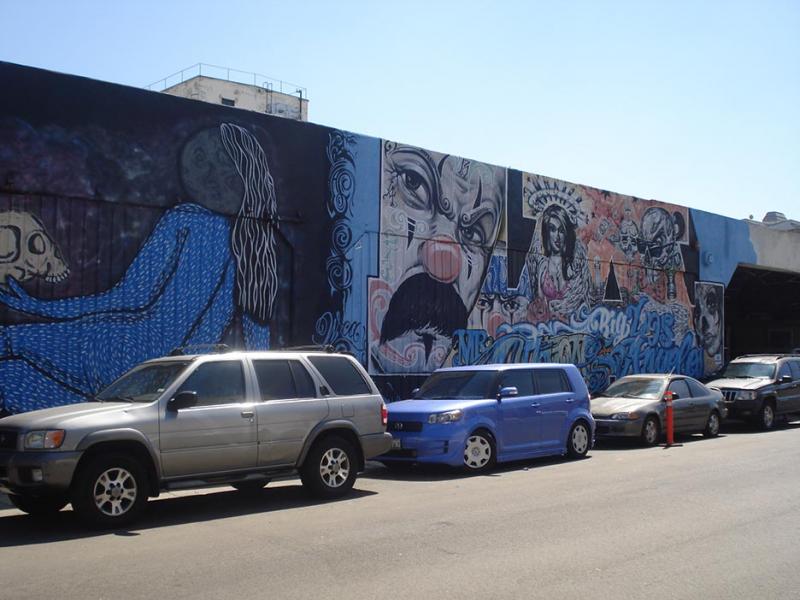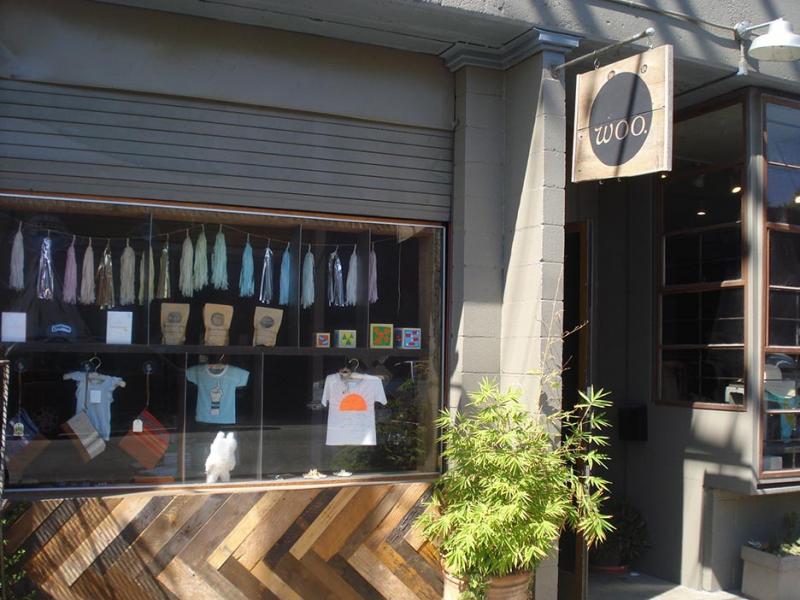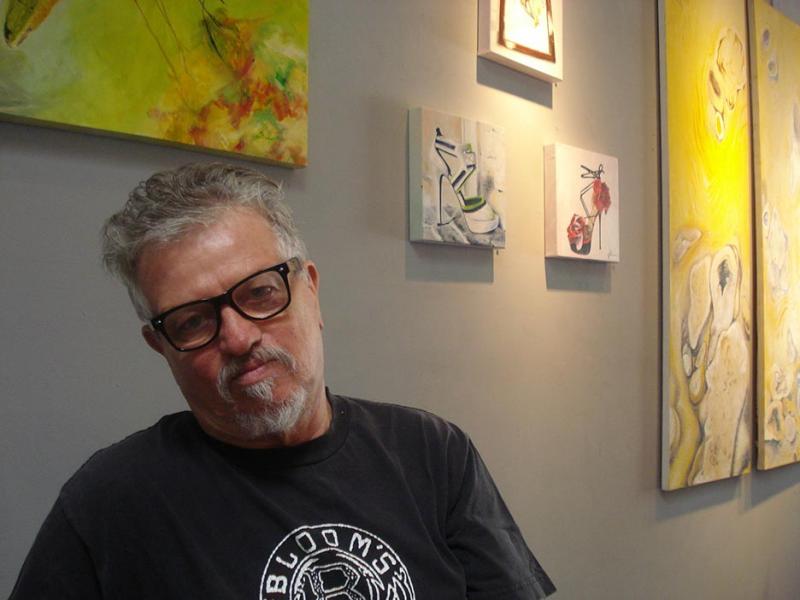Plans to Expand The Arts District Might Bring On An Identity Crisis

Amidst the real estate boom that is rapidly changing the landscape of Downtown L.A., the Arts District might have found a way to keep its eclectic vibe intact.
The Los Angeles Department of City Planning has put forth a draft ordinance refererred to as the Interim Live/Work Zone, which will permit the construction of more live/work spaces in the Arts District, a neighborhood in the eastern part of Downtown Los Angeles.
Creatives have been calling the Arts District home for decades. In the 1970s, artists began flocking to the area in hopes of leasing warehouse space that was extremely affordable during a time when the neighborhood was worse for wear. By the early 1980s, the City of Los Angeles had made it legal for these former industrial spaces to be converted into live/work spaces through the Artist-in-Residence (AIR) ordinance.
READ MORE: Arts District Transplant Is Leading Charge For Its Revitalization
The 90s brought great change to the district: it became either the victim or the beneficiary of gentrification, depending on who tells the story. Some claim that the neighborhood is on course to become L.A.’s answer to New York’s trendy Meatpacking District, with new bars, restaurants, coffee shops and sometimes even homes popping up every few months. But there are barriers to this flurry of reconstruction.
Currently, developers are not allowed to build new residential properties in the Arts District. Live/work spaces can only be created through adaptive reuse of existing buildings. That is where the Interim Live/Work Zone comes in.
Essentially, it is a path that will allow for the creation of new live/work spaces in a specific part of the district. According to the Los Angeles Department of City Planning, the area “bordered by 1st Street to the north, Alameda Street to the west, the Los Angeles River to the east, and 7th Place/Violet Street to the south” will serve as a testing ground for the ordinance. Under the zone's regulations, only 1500 new units can be constructed.

When drafting the proposal the city took care to ensure that it was “based on community goals and values.”
Brian Eck, a planner for the City of Los Angeles, explained that the input of residents is crucial to every decision that is made concerning the neighborhood.
“The very first place we started was in the community and everything we do is community based,” he stressed, while outlining the process of drafting the ordinance. “We asked how [residents] wanted the neighborhood to evolve… We always want to know how they feel and we refine our plans based on their feedback,” he continued.
READ MORE: A Warehouse School: Sci-Art and The Arts District
The goal of the interim zone is to provide more opportunities for artists to thrive in the neighborhood rather than seek greener, cheaper pastures elsewhere. Boyle Heights is a prime destination for creatives who can no longer afford the rising rent in their former stomping ground. While rapid development threatens to drown out the “cool, eclectic” vibe of the arts district, the Department of City Planning is trying to find ways to maintain this growth while protecting the district’s aesthetic.
Developers must apply for the live/work zone and, if their projects are approved, follow certain guidelines to make sure that their new properties match the visual mood of the neighborhood. For example: exterior walls must allow space for art murals, new trees must be planted with each new project and easy pedestrian circulation should be encouraged on the larger blocks.
While the intentions are good, reactions are mixed within the neighborhood.
Michael Badt owns Woo, a clothing company that has been in the Arts District since 2006. From a business perspective, Badt is happy with the changes that have swept the neighborhood. He feels that his shop, which he runs with his wife, is in an excellent location to benefit from the increased foot traffic in the district. Thanks to this influx of shoppers, Badt and his wife were able to add a retail area to the front of their space (the back is reserved for the manufacturing of the clothes they sell). “We want to stay [in the area] for a long time,” he said.
But on a personal level, he has some reservations about the redesign of the neighborhood he loves. “This is the Arts District in name only. There are a few people left in some of the original live/work spaces, but so many manufacturers and artists have vacated their spaces,” he laments. “Right now, it still is a cool space. It’s a good community: people are really friendly and we all help each other. Is that going to stay?”

Badt also has his doubts about the planning department’s claims to consult the community before approving projects. The example of One Santa Fe, a large residential complex whose construction was bemoaned by residents and business owners alike, remains fresh in Badt's mind. “To me, it lacked thoughtfulness… and any input from the community,” he says.
READ MORE: Downtown L.A. Housing Market Renaissance Spurs Development
Jonathan Jerald, a co-founder of Los Angeles Downtown Arts District (LADAD) Space, is a bit more sanguine about recent developments.
“In the late 90s as development began to threaten the area, we realized that artists were going to be driven out. In order to continue to call it the Arts District, we had to find other ways for artists to participate in the community,” he explained.
LADAD Space has in fact forged ties with One Santa Fe. According to Jerald, when the developers of One Santa Fe first broached the idea, LADAD Space’s president Tim Keating “negotiated a deal to get more than 5,000 square feet of space for arts organizations,” he said. The non-profit organization also arranged to have 88 units within the complex set aside as affordable housing for qualifying artists.
The One Santa Fe complex was built before the draft proposal was put forth. It only contains apartments for rent with no distinct workspaces - in direct contrast to the live/work units that the ordinance is supposed to encourage.
Jerald first came to the Arts District in 1989 and later settled as a resident in 1994. He loved his community but realized early on that nothing would get in the way of its evolution.
“The people who’ve lived here the longest would like to turn the clock back thirty years to when there were big empty loft spaces at 25 cents per square foot. Well, that’s not going to happen,” he stated. “Change is inevitable; it’s happening all the time. Either we capitalize on it and try to capture what we can use for the community, or we get run over by it.”

READ MORE: People Welcome New Downtown Development With Reservation
Even Michael Badt concedes that not much can get in the way of the current development boom, but he still hopes that any new real estate projects will remain true to the neighborhood's architectural heritage.
“To repurpose something would always be my first choice, but that’s not always possible. These buildings are old and a lot of them are not reinforced,” Badt noted. “But if you’re going to allow somebody to come in and raze a seemingly insignificant building, at least have the sense to keep [the pre-existing] aesthetic. And strive to rebuild something that is incorporative of that aesthetic instead of just trying to maximize floorspace for profit.”
Before being approved, the Interim Live/Work Zone will be put to a vote by the City Planning Commission. It will then need City Council approval before it’s official, which might not happen until late fall or winter.
Contact Staff Reporter Vanessa Okoth-Obbo here and follow her on Twitter here.



